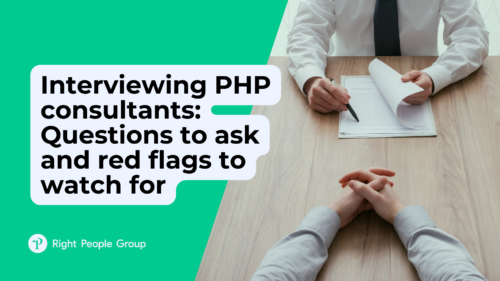Services procurement refers to the process of sourcing and acquiring services to support an organization’s operations. In today’s fast-paced business environment, ensuring an efficient vendor management process is critical to ensure service excellence, control costs, and track performance. To achieve these goals, many organizations are turning to the Vendor Management Office (VMO), a dedicated department responsible for managing vendor relationships, contracts, and performance.
In this blog, we will explore the Vendor Management Office in services procurement, including its roles and responsibilities, benefits, best practices, and challenges. We will also provide practical tips on how to build and manage a successful VMO.
The role of the Vendor Management Office
The VMO is a dedicated department that is responsible for managing vendor relationships, contracts, and performance. It acts as the central point of contact for all vendor-related activities and ensures that all vendors are managed effectively and efficiently.
The VMO’s responsibilities include:
Vendor selection and onboarding: Identifying and selecting the best vendors to meet the organization’s needs, and ensuring that they are properly onboarded.
Contract management: Drafting, reviewing, negotiating, and managing contracts with multiple vendors to ensure that they meet the organization’s requirements and are legally binding.
Vendor performance management: Monitoring vendor performance against key performance indicators (KPIs) and ensuring that vendors are meeting their contractual obligations.
Risk management: Identifying, assessing, and mitigating vendor-related risks to protect the organization’s reputation and assets.
Vendor lifecycle management: Managing the entire vendor lifecycle, from selection to offboarding, to ensure that vendors are managed effectively throughout their engagement with the organization.
Data management and reporting: Collecting and analyzing vendor data to identify trends, opportunities for improvement, and cost savings.
Relationship management: Developing and maintaining positive and mutually beneficial relationships with vendors to enhance the customer experience.
Benefits of having a VMO
Having a VMO in place can provide numerous benefits, including:
Improved vendor selection and onboarding: A VMO can help organizations identify and select the best vendors for their needs, and ensure that they are properly onboarded.
Better contract management: A VMO can help organizations negotiate better contracts, ensure compliance with contractual terms and conditions, and manage renewals and terminations.
Enhanced vendor performance management: Having a dedicated office for vendor management helps organizations track vendor performance against KPIs, identify areas for improvement, and mitigate risks.
Increased cost savings: A VMO can help organizations identify opportunities for cost savings through data analysis, negotiation, and process improvement.
Better risk management: A VMO can help organizations identify, assess, and mitigate vendor-related risks, protecting the organization’s reputation and assets.
Improved customer experience: A VMO can help organizations develop positive and mutually beneficial relationships with vendors, enhancing the customer experience.
Key performance indicators (KPIs) for the VMO
To ensure that the VMO is meeting its objectives and delivering value to the organization, it is important to establish KPIs to track its performance. Some examples of KPIs for the VMO include:
Vendor performance against KPIs: Measuring vendor performance against agreed-upon KPIs, such as service levels, quality, and cost.
Vendor compliance: Ensuring that vendors are complying with contractual terms and conditions, as well as regulatory and legal requirements.
Contract cycle time: Measuring the time it takes to draft, negotiate, and finalize contracts with vendors.
Cost savings: Tracking cost savings achieved through vendor management activities, such as negotiation and process improvement.
Vendor satisfaction: Measuring vendor satisfaction with the organization’s vendor management process and relationship.
Roles and Responsibilities in the Vendor Management Office
The VMO is typically staffed by a team of professionals with different roles and responsibilities.
Vendor management roles and responsibilities can vary depending on the organization’s size and structure. However, there are some common roles and responsibilities that every VMO should have to ensure effective vendor management processes.
VMO Manager
The VMO manager is responsible for leading the VMO team and ensuring that vendor management processes are executed efficiently. This role typically includes the following responsibilities:
Leading the VMO team: The VMO manager is responsible for managing the team of vendor managers and ensuring that they are meeting their objectives.
Setting VMO goals and objectives: The VMO manager should work with the organization’s procurement team to identify the key vendor management goals and objectives that the VMO should focus on.
Developing and implementing VMO policies and procedures: The VMO manager is responsible for developing and implementing policies and procedures that guide the VMO’s vendor management activities.
Ensuring compliance with regulations and standards: The VMO manager should ensure that the VMO’s vendor management practices are in compliance with the relevant regulations and standards.
Vendor manager
The vendor manager is responsible for developing and maintaining relationships with vendors. This role typically includes the following responsibilities:
Developing and maintaining relationships with vendors: The vendor relationship manager is responsible for building and maintaining relationships with vendors to ensure that they deliver quality goods and services.
Negotiating vendor contracts and pricing: The vendor relationship manager should work with vendors to negotiate contracts and pricing that are mutually beneficial to both parties.
Monitoring vendor performance and conducting vendor evaluations: The vendor relationship manager should monitor vendor performance and conduct regular evaluations to ensure that vendors are meeting their contractual obligations.
Identifying and mitigating vendor risks: The vendor relationship manager should identify potential risks associated with vendor relationships and work to mitigate them.
Contract administrator
The contract administrator is responsible for drafting, reviewing, and managing vendor contracts. This role typically includes the following responsibilities:
Drafting and reviewing contracts: The contract administrator is responsible for drafting and reviewing vendor contracts to ensure that they are legally binding and contain all necessary terms and conditions.
Ensuring compliance with contract terms and conditions: The contract administrator should ensure that vendors are complying with the terms and conditions of their contracts.
Managing contract renewals and terminations: The contract administrator should manage the contract renewal and termination process to ensure that the organization’s vendor relationships are managed effectively.
Resolving contract disputes and issues: The contract administrator should work to resolve any contract disputes or issues that may arise with vendors.
Data analyst
The data analyst is responsible for collecting and analyzing vendor data to provide insights and recommendations for improving vendor management processes. This role typically includes the following responsibilities:
Collecting and analyzing vendor data: The data analyst should collect and analyze vendor data to identify trends and areas for improvement.
Developing and maintaining vendor databases and reporting tools: The data analyst should develop and maintain vendor databases and reporting tools to support vendor management activities.
Providing insights and recommendations based on data analysis: The data analyst should provide insights and recommendations based on their analysis of vendor data.
Identifying opportunities for cost savings and process improvements: The data analyst should identify opportunities for cost savings and process improvements based on their analysis of vendor data.
Building a successful Vendor Management Office
Building a successful VMO involves a number of key steps, including:
Identifying stakeholders and sponsors
Identifying stakeholders and sponsors is critical to the success of the VMO. This involves identifying the key stakeholders who will be impacted by the VMO and securing their buy-in and support. It’s also important to identify sponsors who can provide the necessary resources and support for the VMO.
Determining VMO scope and objectives
Determining the scope and objectives of the VMO is important to ensure that the VMO is aligned with organizational goals and objectives. This involves identifying the areas of vendor management that the VMO will be responsible for and defining the VMO’s goals and objectives.
Developing policies, processes, and procedures
Developing policies, processes, and procedures is critical to ensure that the VMO operates efficiently and effectively. This involves developing a set of guidelines that govern vendor management activities and ensure that they are conducted in a consistent and standardized manner.
Hiring and training VMO personnel
Hiring and training VMO personnel is critical to building a strong and effective team. It’s important to hire personnel with the right skills and experience and to provide them with the necessary training and support to ensure that they can perform their duties effectively.
Establishing vendor management tools and technology
Establishing vendor management tools and technology is important to ensure that the VMO operates efficiently and effectively. This includes implementing a vendor management system (VMS) that enables the VMO to track vendor performance, manage contracts, and analyze vendor-related data.
Common challenges and solutions for the Vendor Management Office
Despite the benefits of having a VMO and implementing best practices, there can still be challenges that arise in managing vendor relationships. Below are some common challenges and potential solutions for the VMO:
Resistance from stakeholders
One of the challenges that the VMO may face is resistance from stakeholders within the organization. This could be due to a lack of understanding of the VMO’s role or concerns about changes to established vendor relationships.
To address this challenge, it’s important for the VMO to educate stakeholders on the benefits of vendor management and the role of the VMO in achieving those benefits. The VMO can also work to establish strong relationships with key stakeholders and involve them in the vendor management process.
Limited resources and budget
The VMO may also face challenges related to limited resources and budget. This can impact the VMO’s ability to implement best practices and achieve its goals.
To address this challenge, the VMO may need to prioritize its activities and focus on those that will have the greatest impact. The VMO can also explore ways to streamline processes and leverage technology to improve efficiency.
Incomplete or inaccurate vendor data
Another common challenge for the VMO is incomplete or inaccurate vendor data. This can make it difficult to effectively manage vendor relationships and track performance.
To address this challenge, the VMO can implement processes for regularly collecting and updating vendor data, and establish standards for the quality and completeness of that data.
Difficulty in enforcing policies and procedures
The VMO may also face challenges related to enforcing policies and procedures related to vendor management. This can be due to a lack of buy-in from stakeholders or difficulties in implementing the policies and procedures.
To address this challenge, the VMO can work to establish clear and consistent policies and procedures that are communicated effectively to all stakeholders. The VMO can also establish regular monitoring and reporting mechanisms to ensure compliance.
Inadequate communication with vendors
Finally, the VMO may face challenges related to inadequate communication with vendors. This can impact the quality of vendor relationships and the ability to effectively manage performance.
To address this challenge, the VMO can establish clear communication channels with vendors and work to establish regular communication protocols. The VMO can also establish mechanisms for collecting feedback from vendors and incorporating that feedback into the vendor management process.
Finding the right vendor management office consultants
Finding the best IT and business experts for your projects can be a real headache. That’s where Right People Group comes in. We make it easy to find the right person for the job, no matter what you need.
With us, you’ll get a handpicked list of top-quality professionals to pick from.
Ready to take the hassle out of finding the perfect consultant? Get in touch with Right People Group today, and let’s make something great together!
Conclusion
A Vendor Management Office (VMO) is a dedicated department responsible for managing vendor relationships, contracts, and performance in services procurement. Its roles and responsibilities include vendor selection and onboarding, vendor contract management, vendor performance management, risk management, vendor lifecycle management, data management and reporting, and relationship management.
Establishing a VMO can provide numerous benefits, including improved vendor selection, better contract management, enhanced vendor performance management, increased cost savings, better risk management, and improved customer experience.
To ensure the VMO delivers value to the organization, it is important to establish KPIs such as vendor performance against KPIs, vendor compliance, contract cycle time, cost savings, and vendor satisfaction. Typical roles within a VMO include VMO Manager, vendor manager, contract administrator, and data analyst.







